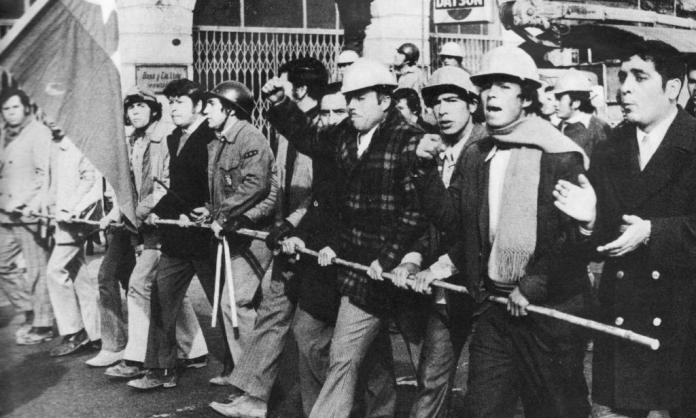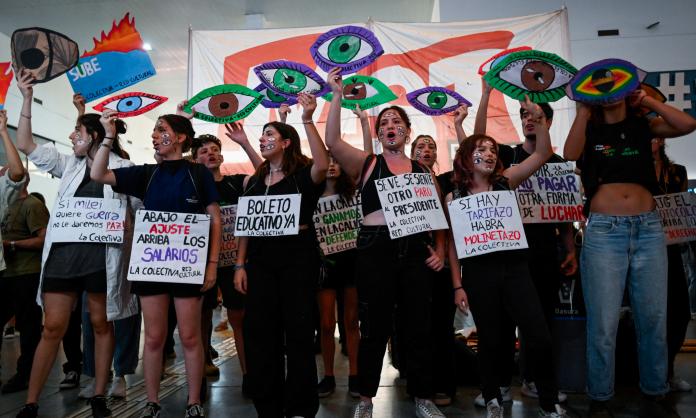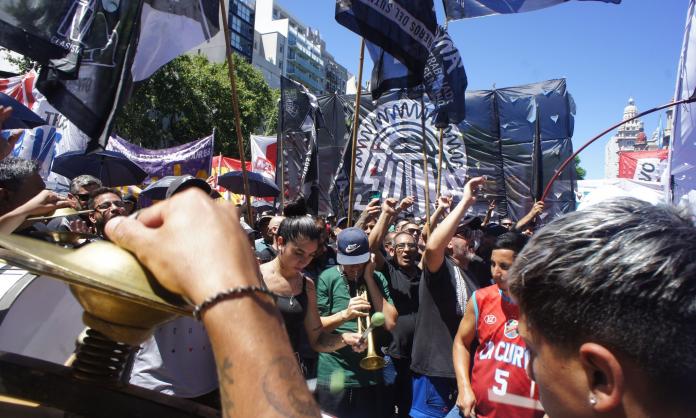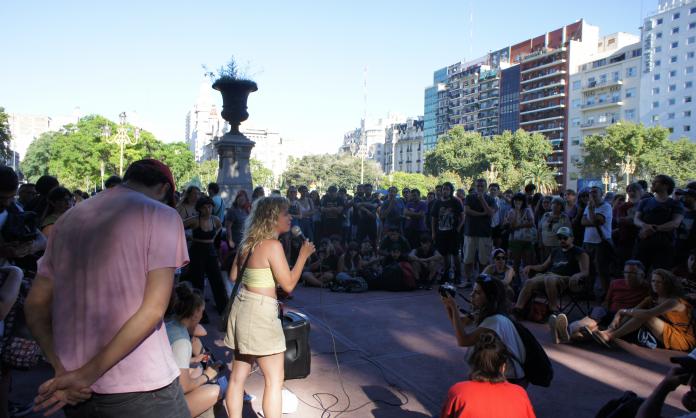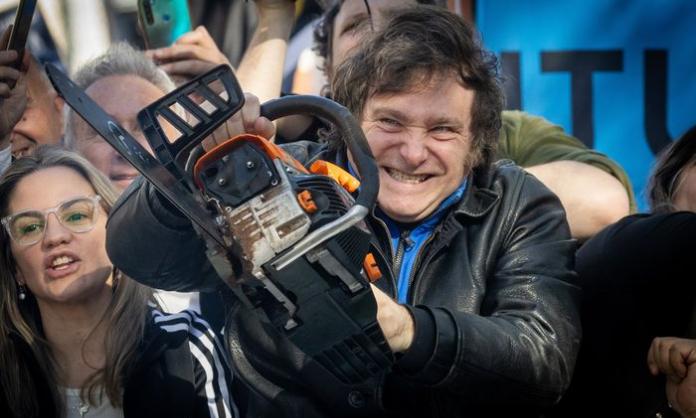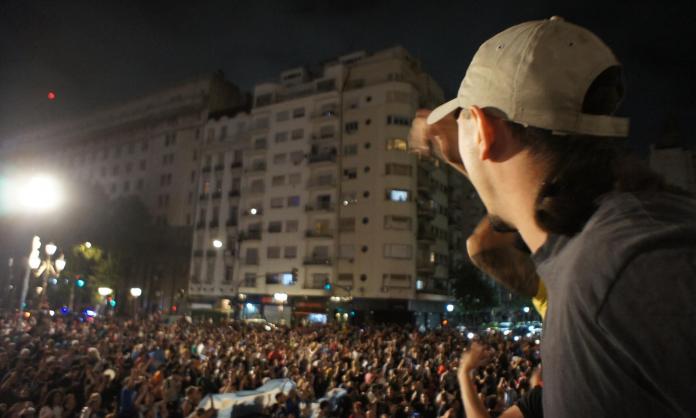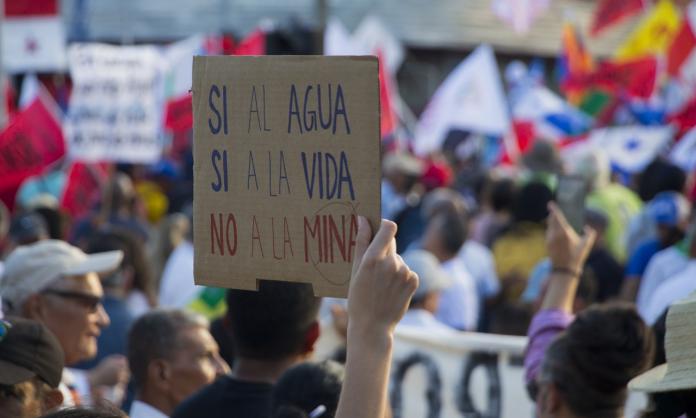1973 in Chile was a year of hope and tragedy. Hope because one of the world’s best organised and most militant working classes was engaged in a fierce class war, and tragedy because it lost. Fifty years have now passed since the Chilean coup of 11 September 1973, which established a seventeen-year military dictatorship. The lessons of the period remain important.
In the 1960s, Chile was industrialising, and there was an increasingly militant and radical movement of industrial workers, urban students and rural peasants. Factory occupations and seizures of land were not uncommon, while student protests began to grow as the universities opened to young people from outside the upper classes.
The 1964 election was an important moment. The main leftist coalition, headed by the leader of the Socialist Party, Salvador Allende, won 39 percent of the vote but lost to Eduardo Frei of the conservative Christian Democrats. Fears that Popular Unity (UP), as the left-wing coalition later became known, would win government with its radical yet reformist program had motivated the CIA to fund Frei’s campaign to the tune of US$3 million—more than US President Lyndon B. Johnson spent on his presidential campaign the same year.
In government, Frei attempted to dampen the growing movement by offering limited agrarian reform and housing and educational programs. But the limited nature of the reforms meant that the strategy failed, and the government often resorted to violence, as when it killed five workers during a 1967 general strike.
By the 1970 election, society was continuing to shift to the left, and it was clear that only the UP had any chance of taming the radicalisation and taking control of the movements that were now beginning to threaten the stability of Chilean capitalism.
The UP platform of 1970 reflected the militancy and class consciousness of its base, directing blame at all sections of the ruling class. “The only alternative ... is to bring to an end the rule of the imperialists, the monopolists, and the landed oligarchy and to initiate the construction of socialism in Chile”, it read. And it called for the “mobilisation of the Chilean people toward the conquest of power” by the establishment of “Popular Unity Committees in every factory, farm, poor neighbourhood, office or school”.
The platform went on: “Popular Unity Committees will not only constitute electoral organisations. They will interpret and fight for the immediate claims of the masses and above all they will learn to exercise power”. It also demanded the nationalisation of industry, land redistribution and expansion of welfare.
So it was understandable that, when the UP won the 1970 election, a huge section of the working class looked to Allende with the hope and expectation that he would begin a revolutionary reconstitution of society in their favour.
In the first year of the UP government, there were significant improvements to living standards for broad sections of the population and a limited implementation of some key aspects of the UP platform. Chile’s largely foreign-owned copper mines were nationalised, agrarian reform was intensified, unemployment fell, average wages rose by around 50 percent, and inflation was significantly reduced through price controls. Support for the government grew, and the UP won an absolute majority in municipal elections six months later.
Among the growing aspirations and confidence of the labouring classes, a popular, left-wing artistic movement also arose. Famous protest songs such as “Venceremos” and “El Pueblo Unido Jamás Será Vencido” made clear calls to action:
Arise, sing
We are going to win.
Flags of unity are now advancing.
And you will come, marching together with me,
And so you'll see your song and your flag blossom.
The light of a red dawn already announces the life to come.
But despite the popularity of Allende, and the willingness of the people to defend the UP program and even push it further, the government faced material constraints and political resistance from the middle and ruling classes. Towards the end of 1971, the strong growth of the economy and increased consumption of the working class were beginning to be felt in food shortages. The political right seized on this as its first opportunity, after being on the back foot for over a year, to lead anti-government marches of the middle classes through the streets of Santiago.
As tensions rose, Allende and his reformist government did everything in their power to avoid open class conflict. Increasingly, they denounced striking workers and peasants who seized land, and violently used the forces of the state to stop them. In doing so, Allende found a willing partner in the Chilean Communist Party, which, given its significant base in major unions, had a strong influence over important sections of workers.
At this point, a key contradiction of the UP program was exposed. Allende had never seriously attempted to combat the institutions of the state. While his government reformed some areas, others were left largely untouched. Even the 1970 platform maintained the military, police and capitalist judicial system. Further, despite Allende’s radical rhetoric of workers exercising revolutionary power, he constantly stressed the importance of achieving change within the limits of the existing capitalist system.
What Allende and the UP leaders offered was a strategy of compromise with the ruling class. But any compromise inevitably meant workers and other oppressed layers accepting their own subordination to and exploitation by the Chilean capitalists. Despite Allende maintaining huge levels of support across the country, by early 1972, key sections of the working class were no longer willing to accept the strategy. Neither were some in the ruling class.
One of the first major ruling-class attacks was a bosses’ strike in the trucking industry in early October 1972, almost immediately causing the movement of food and basic goods to grind to a halt. A few days later, other major industrial associations joined the offensive, along with doctors, engineers and other sections of the middle classes.
The different responses on the left showed the growing division between the moderate leaders, Allende and the Communist Party, and the rank and file workers, who were demanding a more combative strategy. Instead, Allende called for “good sense” and “reflection”, while asking workers to avoid any type of “sporadic or spontaneous actions”.
To the left of the UP, calling for a more militant response, were groups such as the Revolutionary Left Movement (MIR). Founded in 1965, the MIR was a unification of several revolutionary parties. Originally formed with a focus on the poorer sections of the working class, by 1972 it was slowly beginning to orient more to the better organised sections of industrial workers. In contrast to Allende, the MIR called for the establishment of “communal coordinating committees”, “to put into action the masses and develop their political initiative, under the direction of the working class and the revolutionaries”.
With no real leadership coming from UP officials, and shortages beginning to bite, the rank and file began to move independently. At this moment, the cordones industriales rose to become the leading organ of resistance to the bosses’ strike. Established a few months earlier in Santiago, the cordones were coordinating centres that grouped together factories and other workplaces in a certain area to organise the struggle against the bosses locally. Now, in the face of economic sabotage, the cordones began to control production and distribution all over the country.
Neftalí Zúñiga, a worker Communist Party member in the Pollak cordón, related her experience:
“We had six people absent, no one else, everyone came to work. From Renca, Puento Alto, San Bernardo they arrived at work, did their day and went home. We made sure to supply them with food, so they were able to walk from five in the morning to arrive at eight”.
Another militant spoke of the ingenuity of the workers in alliance with students:
“It was a marvellous thing, almost all the factories of Santiago operating without bosses! The workers were producing the most sophisticated things, designing shoes, and we sold them at the market. My role was to move the products, see how many workers there were in the factories and go find them ... We went with the garbage workers to look for petrol in Maipú and we brought it back to all of Santiago. The students were looking for vegetables and were distributing them to the neighbourhoods, in the neighbourhoods there was everything.”
There were even cases of factory workers threatening the technical staff, who had largely deserted, to ensure they stayed to help with production. In other areas, workers’ brigades were formed, albeit very poorly armed, to defend against any potential attacks from the military or police.
During October, the cordones also established an independent press. Newspapers served as organs for the left parties to debate immediate tasks and strategies. Union militants of the Socialist Party in one cordón released a manifesto called “To advance, bourgeois power must be destroyed”.
In many workplaces and cordones, childcare centres were established and cultural events were held. Elsewhere, a system of direct sales was established that basically wiped out the black market.
The organisation of the working class through the cordones defeated the bosses’ strike by the end of October. When the strike officially ended, there were huge victory marches all over the country. In the wake of victory, an additional 65 factories were nationalised, of which only nine were part of the government’s original plan.
The devotion, enthusiasm and success of the Chilean working class in October 1972 give a glimpse of the collective power that workers have to run society in their own interests. In the most embryonic form, the cordones were a first step towards building the type of organisation the working class needs to rid itself of its oppressors and exploiters.
But the organisation and leadership of the rank-and-file contrasted to the leadership of Allende. The cordones represented an alternative base of power belonging exclusively to the working class, and for that reason Allende and the reformists in power feared them. At every step, they tried to restrain the cordones and maintain any resistance within constitutional bounds.
While the strike was defeated by the cordones, it officially ended through an agreement between Allende’s government and the opposition parties, representing the major business associations. Shamefully, the agreement established a new cabinet that included three senior members of the military.
After such an outstanding working-class victory, Allende wanted to take back control of the movement, which he had temporarily lost. A few months later, in early January, the government proposed a law to return nationalised factories to their owners, which became known as the “Prats-Millas plan”, after its inventors, the Communist Party Minister of Economy Orlando Millas and the general-turned-cabinet-member Carlos Prats.
Immediately, workers all over the country recognised the plan for what it was and prepared for another battle. The Cerrillos-Maipú cordón declared that the plan “was a transaction between the government and bourgeoisie with which only the bosses win, and they win to continue with their permanent activity to definitively defeat the working class”.
Once again, the cordones went into action, accompanied by large protests and street blockades of the Presidential Palace in Santiago. Even mid-level members of Allende’s Socialist Party were beginning openly to criticise and oppose the law. In late February, the government withdrew the plan.
Thus, from October 1972, after the defeat of the bosses’ strike, into the early months of 1973 with the defeat of the Prats-Millas plan, the Chilean working class had achieved two great victories against the military, the industrialists and the UP government itself. Consequently, the ruling class now rejected any parliamentary manoeuvres and began preparing the ground for a military coup, seeing no alternative but to crush the UP government, along with the union movement and revolutionary left.
The military leaders resigned from the cabinet after the defeat of the Prats-Millas plan, and the right-wing press was rabid in support of a coup. Allende, however, continued to seek appeasement. Nor did the Communist Party provide any lead when it launched its slogan, “Collect signatures against civil war”.
Over the coming months, large protests were held in Santiago and other cities to defend democracy. There were even signs of rank-and-file mutinies within the army and navy. But by early September, with Allende having assured the military leaders he would offer no serious support to the resistance movement, they felt confident enough to make their move. On the morning of 11 September, the army moved into the Presidential Palace.
In the lead-up to the coup, the appetite for serious resistance from the cordones and the working class was unquestionable. Only six days prior, the provincial coordinator of the cordones industriales sent a letter to Allende, in which it outlined with great accuracy what was to come and what needed to be done.
It opened with the workers’ alarm over the “unleashing of a series of events that we believe will lead us not only to the liquidation of the revolutionary process in the short term, but, in the long term, to a fascist regime of the most criminal and implacable kind”.
With great clarity, it condemned Allende for not taking the opportunity on several occasions to defeat their enemies:
“When the generals and seditious officials ... placed themselves above the law, they could have been beheaded and ... the process could have been carried to triumph, having moved onto the offensive.
“What was lacking in all these occasions was decision, revolutionary decision, what was lacking was confidence in the masses, what was lacking was knowledge of its organisation and strength, what was lacking was a determined and hegemonic vanguard.”
The cordones now clearly expressed an understanding of the failures of reformist strategy and the necessity of revolutionary action:
“We, the workers, agree with Mr Frei on one point, that there are only two alternatives: dictatorship of the proletariat or military dictatorship. We are absolutely convinced that historically reformism that seeks dialogue with those who have betrayed [us] over and again, is the quickest path to fascism.”
The letter ended with a warning to Allende that if he continued with his strategy, he would “be responsible for bringing the country not to a civil war, which is already in development, but to the cold, planned massacre of the most organised and conscious working class in Latin America”.
Despite the heroic resistance that was put up by workers in certain areas, a reign of terror was unleashed that resulted in the torture and murder of tens of thousands of working-class militants, giving birth to seventeen years of a brutal military dictatorship.
The lessons of the defeat were immediately clear. Allende, to his dying day, remained steadfastly committed to the parliamentary road to socialism. But this road was blocked by every institution of the ruling class—the police, military, judiciary, business associations—backed by US imperialism. The UP leaders were bound by a commitment to constitutionality, for which their enemies showed no regard.
Further, the defeat shows that the state cannot simply be captured by a reformist government and converted into a tool for the exercise of working-class power. It must be smashed and a new, workers’ state established on its ashes.




